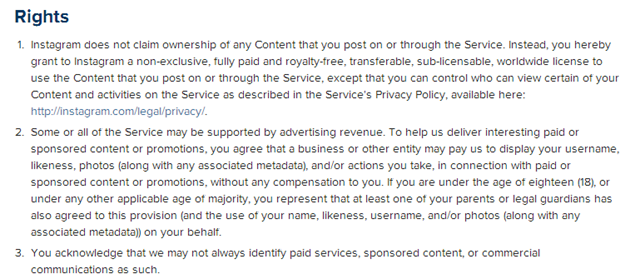 When Instagram burst onto the scene with its mobile only platform and funky photo filters it came armed with a secret. It wasn’t just about the photos.
When Instagram burst onto the scene with its mobile only platform and funky photo filters it came armed with a secret. It wasn’t just about the photos.
Sure, the vast range of photo filters were appealing. They provided a layer of nostalgia for the Gen Xers raised on Kodak round edged photos and soft focus pastels from the 70s. Some filters created a more edgy feel, displacing the photo border and accentuating the top end of the colour spectrum. They made the amateur photographer feel empowered, even if the filters sometimes degraded the photo quality. What we lost in quality we made up for in consistency of image, framing and in the ease of digital cropping.
Community was the secret sauce of Instagram
But Instagram was more than just a fun way to take photos. For many social network early adopters, it was a sanctuary from the noise of Facebook and Twitter. It allowed people to curate small communities of like minds, where networks of dozens, hundreds and in some cases, thousands, of people could share photos, tips and engage in in-the-moment sharing, collaboration and discussion.
And as the platform was engineered around mobility, it had built-in location awareness and sharing, so that closed networks of connections could create a sense of context around the digital interaction. Moreover, with push awareness, users could be updated on any interactions with their own images, comments, likes, loves and so on. It brought a human dimension to the digital experience. It was a sense of community and all the goodness that comes with that sense of belonging.
Facebook’s billion dollar acquisition changed the Instagram game
When Facebook purchased Instagram back in April 2012 for about $1 billion, it was only a matter of time before something changed. Facebook CEO, Mark Zuckerberg focused on synergies, announcing:
For years, we’ve focused on building the best experience for sharing photos with your friends and family … Now, we’ll be able to work even more closely with the Instagram team to also offer the best experiences for sharing beautiful mobile photos with people based on your interests.
But throughout 2012, Facebook has also been under pressure to prove its IPO valuation. And Instagram was a canny move, because it brings a ready made market.
Changing Instagram’s terms of use
Facebook are well-known for pushing the limits of user privacy. They started with the now failed Beacon. Then they stepped back and made a claim over all user generated content published on the social network. After a series of protests, Facebook modified their claims, but still succeeded in shifting the boundaries on user privacy and content ownership.
Taking a leaf out of the Facebook guide to user engagement, Instagram have now updated their terms of use which are due to come into effect on January 16, 2013. Buried within the Instagram site, these terms provide for the following “rights”:

Saying goodbye to the early adopters, welcoming the mainstream
In making this move, Instagram is sounding its own death knell. It is signalling the end of the relationship to those who care about (and understand) the complex nature of web privacy. These “early adopters” were the founders of the Instagram community and fuelled its growth.
According to the diffusion of innovations, early adopters are vital in bringing new technology to the mainstream audience. Without the support of the early adopters, new innovations fall into the “chasm” and never reach wide acceptance within a community.

But the early adopters have done their job now and as Instagram says goodbye to them, it is opening its arms to the mainstream. The early adopters have bridged the chasm and are shifting their focus away from community building to monetisation.
Facebook’s lucrative double whammy
Facebook’s billion dollar investment has not only eliminated a competitor, it has opened a lucrative new revenue stream. Extending the existing Facebook photo sharing functionality (for which it was already a global leader) by integrating the Instagram capabilities will help drive further online usage.
The change in the terms of use will provide new revenue by allowing Instagram to license your photographs, name and images to content hungry third parties.
The shift from users to customers
Many have suggested that Instagram, as an alternative, should charge to download their app. But this would change the nature of the relationship. At present, Instagram has a strong community of “users”, but charging would make those users “customers” – and that in turn would compromise the business model.
As it currently stands, Instagram’s “customers” will be those “third parties” – brands and businesses who are interested in the vast quantities of content being produced by Instagram’s users.
Instagram may re-jig the terms of use with slightly more generous concessions based on user protest, but users should expect that the direction to be maintained.
So what happens to the early adopters?
They’ll move to a new service. They’ll rediscover Path or re-evaluate the new Flickr app. Perhaps they’ll warily move to the new mobile Twitter app with in-built filters.
But saying goodbye to the early adopters is not the end of the world. It’s the start of a new mainstream story. And many of us will only care when we see our own images splashed, out of context, in some other place on the web. But by then, that will be too late.
For many, privacy and “intellectual property rights” over our own image is happily traded for the benefits offered by social networks. But the choice is individual – and the challenge we all face is to be informed. And it’s bound to become more challenging in 2013.







